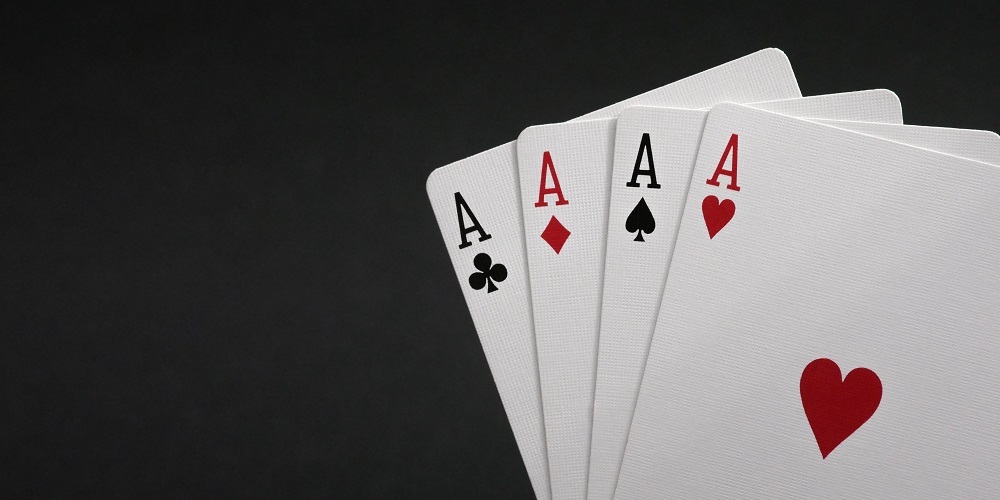

Coinflip in online poker: what is it and how to deal with it?

One of the most delicate situations a poker
player can face is the coinflip. To survive it, you need cold blood, a lot of
analytical skills and an enormous confidence in your chances. And,
literally translated, the term "coinflip" means "to flip a
coin", which already gives us an idea of what it is all about.
Let's see what a coinflip is and what it takes to beat your opponent in a similar situation.
Coinflip: what does it mean in poker?

"Coinflip is the technical term we use to
refer to a draw situation caused by cards that give a very similar value to
the hand compared to the opponent's one. When there is a very even chance
of victory, what we can also call "fifty-fifty" (because of the 50%
chance that each one has), we say that the game has entered coinflip.
The thing about the coinflip is that it can
make a great player with a great hand fall, hence the insecurity it awakens
and the tremendous possibilities that open up for those who are not usually
able to face their rivals face to face with such even odds.
The interesting thing about the coinflip is not
only the fact that it occurs, but that all the players involved (usually two,
although there may be more, although the chances are remote) make the same
reading of the game so that they reach the same conclusion.
Many factors come into play here, and it is
exciting, especially for those who are watching the game, to see how each
player makes his own reading of indications and carries out his calculations
during the breaks to detect that everything leads to the same conclusion:
that both have a 50% chance of winning and a 50% chance of losing everything.
Even in online poker this is tremendously attractive, because it is through the game that others can draw the interpretations of the reading of the game that those involved are making, and not through the typical tells of live poker, which gives it an even more subtle point that is exciting.
How to play in case of 50-50

All this leads us to a conclusion: detecting
the coinflip is basic. If we are not aware that we have the same
probability of winning as losing, we will surely end up doing the latter, so it
is essential that we are aware of the position in which we find ourselves.
It is a mistake to rely on the typical plays
that each player has. If we have the game of an opponent and we see that during
the coinflip he has not adapted his game, he has probably not detected the
fifty-fifty, which puts him in inferior conditions because all his game
will be compromised by a chain of bad decisions, and in the coinflip the one
who takes the initiative is the one who is best positioned for victory.
But beware: coinflips are so treacherous that it is always best to run away from them. Almost nobody is prepared to face another player with a 50-50, so it is better not to expose yourself. But, as we say, if you have no choice but to get involved in one, you have to be the one in the driver's seat to try to get out of it.
What does it mean to take the initiative in poker?
That's right: betting. Why is this so important? Because if you
start by betting, you will be the one in a position to put the other player
between a rock and a hard place. On the other hand, if he is the one who takes
the initiative, he will play with you as much as he wants and he can force you
to an all-in that makes you say goodbye to the hand.
A basic tactic for those who face another
player in a coinflip is not to rely too much on the opponent's aces. If
we get into a hand with aces, we will think (rightly so) that any play will be
inferior. Aces should keep us alert but beware, because we can easily lose.
However, keep in mind that losing in a coinflip does not necessarily mean that
you have played badly.
In the end, it all depends on the cards and the
small margin that goes for or against you. An even all-in is fatal for any
player, no one wants to be involved in an all-in bet with a 1% chance
that tips the balance one way or the other, but for the spectators and players
who are out of the hand but witnessing the game, it is quite a spectacle.
A typical coinflip situation in poker usually
occurs in Texas Hold'em, when a pair is preflop against two high cards.
It is worth mentioning that coinflips do not have to be even: narrow margins
approaching a fifty-fifty are valid. For example, two players facing each other
with high cards and leaving winning odds of 45-55 would be considered a
coinflip, making all these considerations valid for the game.
You may also like

Freeroll poker tournaments: what are they and how do they differ from more traditional tournaments?
There are many reasons for the success of online poker. Playing whenever and wherever you want is undoubtedly the main reason why a good number of card fans have switched to online poker.In additio...

Poker Face 2" Returns with More Mystery and a Star-Studded Cast
Poker Face 2" Returns with More Mystery and a Star-Studded CastCharlie Cale's Comeback: "Poker Face 2" Premieres SoonAfter a successful first season, Poker Face is back with a second installment, m...

MicroMillions Returns to PokerStars with Over €4M Guaranteed!
MicroMillions Returns to PokerStars with Over €4M Guaranteed!The wait is over: MicroMillions is back at PokerStars in 2025 with its signature mix of low buy-ins and massive prize pools. From Januar...













